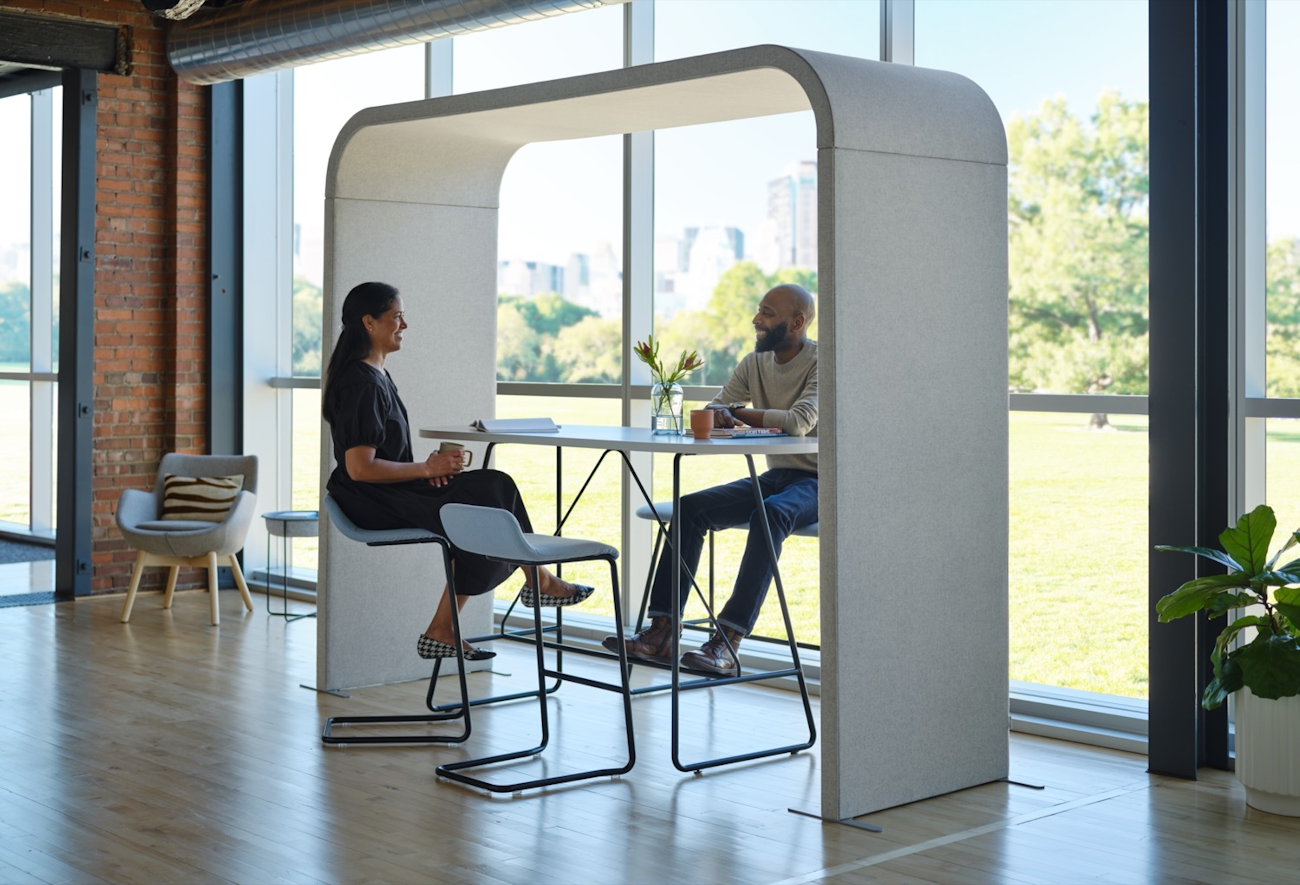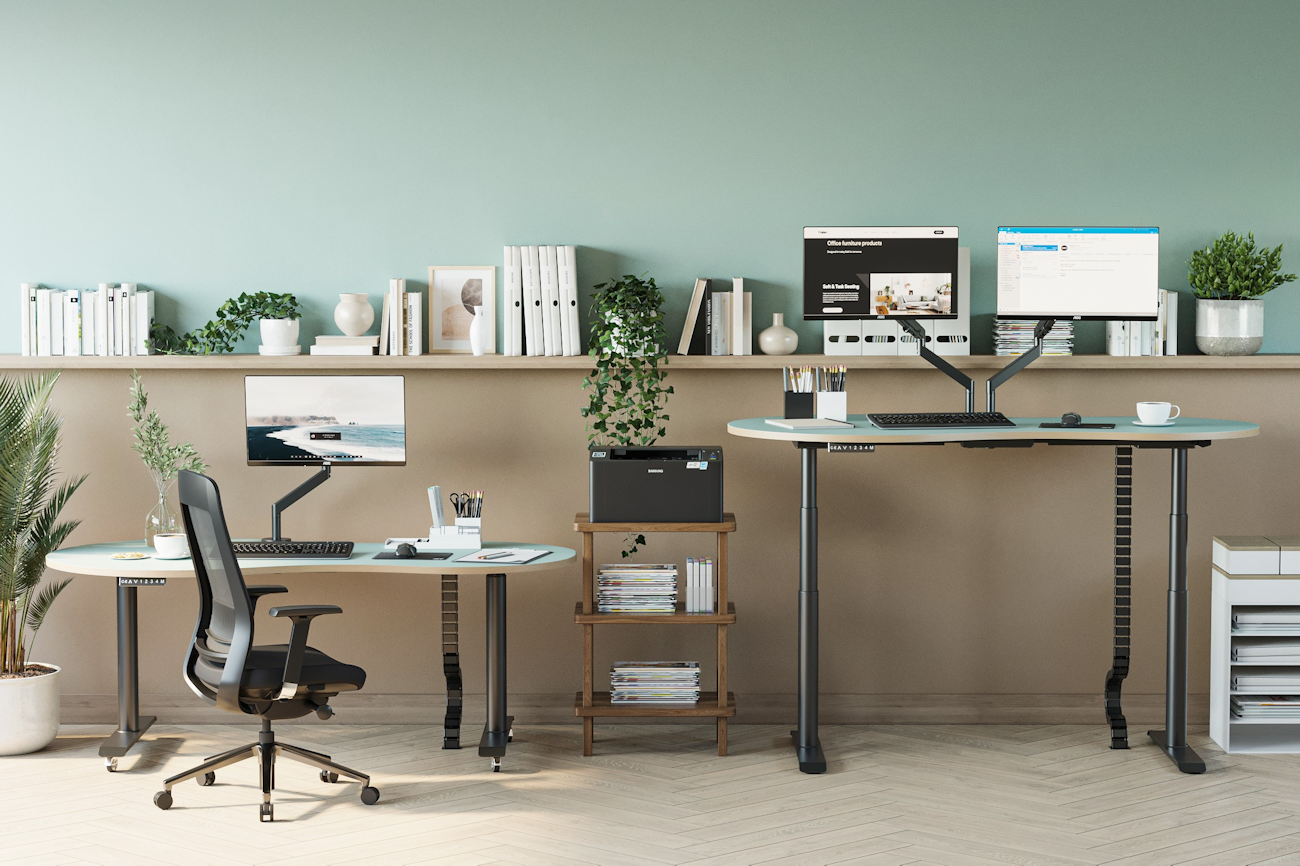Insights
4 hacks to ensure your workplace attracts Generation Y & Z talent

Millennials or so-called Generation Y make up the majority of today’s workforce, so there is little surprise as to why ‘millennials in the workplace’ is becoming a popular topic amongst employers.
When employers thought they only had Generation Y to think about, now there is Generation Z too who are all starting to enter the workforce. The question is, how do workplaces attract younger talent and meet their changing needs?
In this article, we explore 4 hacks on how to transform your workplace to attract and retain younger talent.
Who are Millennials and Gen Z?
Let’s start with the basics of who each generation is. The answer to this question often depends on who you ask as there are differing opinions on the matter.
- Generation Y are known as “millennials” as they were born between 1981 and 1996, which means most millennials today are between 23 and 38 years old. The name ‘millennial’ came from the earliest members of the generation graduating school as the class of 2000 – also known as the new millennium. They make up the majority of the workforce. In a workplace, Generation Y look for a good work-life balance, flexible working hours, and diverse policies.
- Generation Z are those born in 1996 onwards. They are tech-savvy, socially conscious and highly ambitious. 52% of Gen Z are more confident in their technology skills than their soft skills, this is hardly a surprise considering they are the first 100% digitally native generation. Generation Z are also great multitaskers who can work using 5 screens at once! They are known to be more interactive, with 34% more concerned with boosting their people management skills. They are naturally more social than generation y, spending 7.6 hours per day socialising with friends and family.
While both these generations are digital natives and are largely influenced by technological innovations and electronics, the main difference is that generation Y witnessed the birth of technology and internet, whilst generation Z has never been without it – making them a little more tech-savvy than Generation Y.
Now you know the basic differences between the two generations, read on to find out the 4 hacks to ensure your workplaces attracts and retains both talents.
Hack 1: Implement collaborative spaces in the office
It was revealed in a survey, that over a third of Generation Y and Z said they achieved their best work in environments that enabled them to focus and collaborate with others. This is because most colleges and educational institutions support teamwork through group projects, so younger generations are very much used to working together, sharing ideas, and collaborating.
Generation Y and Z both want opportunities to have their voices heard. Despite their love for technology, generation Y and generation Z both see discussions ‘in-person’ as the most effective method of communication.
Some furniture ideas to create a collaborative space fit to attract Generation Y and Z talent are:
- Scott Meeting Pod: an acoustic meeting pod that can house 2-4 people and offers optimum sound absorption. Scott Meeting Pods are a practical solution for creating a private space for collaboration particularly in open plan offices.
- SoundRoom: innovative technology based on acoustic screens with sound diffusing geometry. This comfortable seating system provides the perfect space for meetings and teamwork between colleagues.
- Tritos: not only does the Tritos sofa provide a high level of user comfort, but the modules can be placed in a circular shape for great collaboration opportunities so colleagues can sit around facing each other to take part in discussions.
- Arc: A sound absorbing roof that creates a feeling of enclosure. Meeting tables can be placed underneath to create a more shielded space to collaborate.

Hack 2: Focus on Health and Wellbeing in the workplace
Mental health is a big topic, particularly amongst Generations Y and Z. Therefore, they are increasingly looking out for employers who show they care about mental health issues.
Mind Share Partners conducted a survey to examine mental health issues and how they affect employees. A whopping 75% of Generation Z’s have left a job partially due to mental health reasons. On top of this, it has been revealed 52% of employees call in sick due to stress and up to 80% of job-related accidents are caused by stress related fatigue.
A similar survey by Deloitte Global, showed a concerning 41% of millennials and 46% Generation Z’s shared they feel stressed or anxious most of, or all of the time, with more than half stating they felt more stressed than before the pandemic. Many of those surveyed, to be exact six in ten, said they do not speak to employers about their increased stress and anxiety. 49% who had taken time off for mental health reasons, actually gave their employers a different reason for their absence.
Some ways to reduce stress and anxiety in the workplace include offering more flexibility (we will get to this point later), offering a welcoming space, and making sure you have break out areas within the office where employees can retreat and unwind to take a break from their computers.
Implementing soft seating can add the homely element back into the office which can make employees feel more comfortable and help to reduce stress. For example, the Hug Me sofa is wrapped in ultimate comfort thanks to its functionality combined with the warm and homely feel of each piece. With the Hug Me, the ‘home’ element can be truly brought back into an interior space.

Also, you may have heard biophilic elements are a great way to reduce stress in the workplace (very true), so why not try adding our Zorla planter to brighten up your office interiors?
Too much screen-time with little breaks will only increase stress further for employees. It’s crucial to implement an office design that supports health and wellbeing, and to show that you care in order to attract and retain generation y and z talent. Another way to do this is by implementing ergonomic furniture into the workspace, starting with task chairs that offer lumbar support like our Paxton that has a unique backrest designed to maintain the natural curvature of the spine.

Hack 3: Adapt to flexible office working
Hybrid working opportunities have become increasingly more important in recent years, particularly since the Covid-19 pandemic. The Deloitte Global Millennial survey found that nearly 75% of the millennial workforce thought that a work from home or remote working policy is important. A good work-life balance that is more flexible is also better for supporting employees physical and mental health as it will help decrease the chances of stress and burn-out occurrences. So, making sure the workplace supports flexible working can be very beneficial to a business.
The agile workspace designs that support flexible working are similar to open-plan offices, but the key difference is they are purpose-designed spaces built to support the different activities employees are performing.
Whether that be creative hubs for collaboration, private booths/pods that absorb sound to allow people to maintain focus, portable and reconfigurable furniture that can adapt to an individual’s needs, or social spaces where employees can take a break from work and relax. Agile office spaces are becoming increasingly more important to Generations Y and Z as it delivers a number of benefits including:
- Increased productivity and efficiency
- Supports flexible working
- Enhances creativity and innovation
- Helps to ensure a good work-life balance
- Improves job satisfaction
- Promotes health and wellbeing

For the younger generations, work doesn’t have to happen in one particular location either. The results of a Fall 2021 survey of Generation Z candidates from a recruitment software company showed more than two-thirds of talent wanted jobs that will indefinitely stay remote!
However, offices still have a place in the future as long as they adapt to the hybrid working model or how we call it: The Campfire model. Office furniture that supports flexibility such as height-adjustable desks, can be added in order to make employees feel more comfortable. Creating collaboration areas is definitely a must but having focus areas is as important. For focused work, our four height-adjustable Wolfe desk gives the user also the flexibility to choose whether they wish to work standing or sitting. Similar to the Wolfe, we recommend our new height-adjustable Flexure desk that has a telescopic frame and the option to add casters, making Flexure versatile and futureproof for the ever-changing demands in a growing workforce. Better yet, our new Wright Cowork Desk is perfect for agile workspaces due to its diverse range of options including different heights and adjustable sides.
Providing employees with the option to work remotely as well as in the office, encourages a flexible and improved work-life balance and this leads to more productive and happier employees – a win for everyone!

Hack 4: Make the workspace tech-savvy
As we have discussed, the younger generation love their technology – particularly Generation Z who have never been without it. In fact, 82% of millennials have said technology influences the role they decide to take.
This means they will be bemused by outdated office systems that are slow with limited software, often this will end up rather frustrating for them as it could restrict their talent and learning progression. Learning in particular is key for the younger generations and is not just seen as an attractive perk. These age groups expect strong wi-fi, cloud computing, automated software, and smart buildings in order to engage and stay with a company. Having elements such as monitor arms and power modules to support with this tech transition is key.
Opting for a design that is tech-friendly and fully integrated into the office design will allow talent to maximise productivity and be able to do their job efficiently.
On top of making sure office Wi-Fi, computers, apps, and other software are up to their standard, you can also think about adding smart locker storage. Our Brunel smart lockers are extremely user-friendly, easy to manage, and the software can be integrated with other systems. Due to being cloud based with a low administrative burden because of its self-management functionality, Brunel smart lockers allow the user to be more independent.
Office furniture from Haiken
At Haiken, we have a wide variety of office furniture from soft seating and height-adjustable desks to smart storage solutions to help attract both Generations Y & Z. Contact our expert team today as we are always happy to help and answer any questions you have.